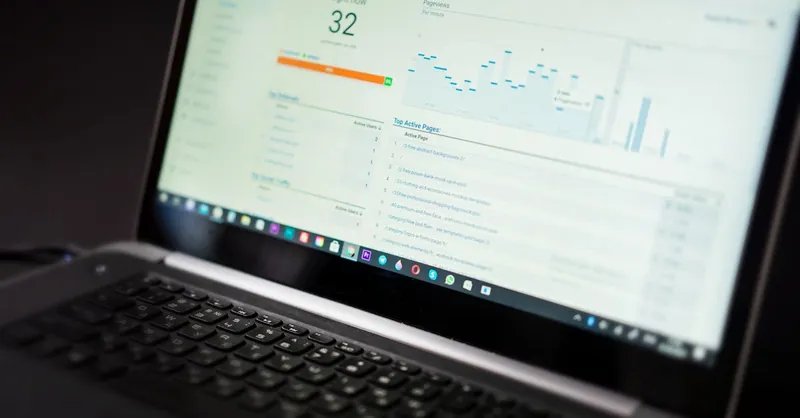Earn Recurring Income with Software Licenses: A Programmer’s Guide
Category: Programming
Unlock Passive Income with Software Licensing
If you're a programmer or a tech-savvy individual exploring ways to generate consistent passive income through your coding skills, you've landed in the right place. You likely understand software development inside out but find yourself wondering how to monetize your creations reliably over time rather than chasing one-time payments or freelance gigs. The recurring revenue model through software licensing is a proven approach but can be daunting without a clear roadmap. This post cuts through the noise, providing a comprehensive, practical guide on how to earn recurring income with software licenses. You'll learn both the strategic and technical aspects including licensing models, pricing, legal essentials, and distribution methods. Whether you are building a niche utility, SaaS platform, or desktop tool, this guide offers actionable insights to help you generate steady income while focusing on your passion for coding. By the end, you’ll have a solid framework tailored to tech creators looking for innovative yet feasible passive income streams — no advanced business jargon or marketing fluff, just clear steps that respect your expertise and time.
- Unlock Passive Income with Software Licensing
- Understanding Software Licensing: Definitions and Types
- Choosing the Right Licensing Model for Your Software
- Setting Up Licensing Infrastructure and Tools
- Pricing Strategies for Recurring Software Licenses
- Legal Considerations and Protecting Your Software
- Marketing and Selling Licensed Software Effectively
- Managing Customer Support and License Renewals
- Scaling Your Recurring Income with License Upgrades and Add-ons
- Integrating SaaS and Cloud Licensing Models
- Monitoring, Analytics, and Continuous Improvement
Understanding Software Licensing: Definitions and Types
Before diving into strategies for earning recurring income with software licenses, it’s crucial to understand the core licensing models that govern how your software is distributed and monetized. Software licenses define the terms under which users can access, use, and sometimes modify your product. Choosing the right license model not only affects user adoption but directly impacts the sustainability of your recurring revenue stream.
Key Types of Software Licenses for Recurring Revenue
-
Perpetual Licenses
A perpetual license grants customers lifelong access to a specific version of your software after a one-time payment. While this may generate substantial upfront revenue, it often lacks a natural recurring income component unless paired with paid updates or support contracts. Perpetual licenses are common in traditional desktop software but less suitable if your goal is predictable, ongoing revenue. -
Subscription Licenses
Subscriptions are the backbone of modern recurring income models. Customers pay on a regular basis (monthly, quarterly, or annually) to use the software for as long as they maintain their subscription. This model provides steady cash flow and encourages ongoing engagement, making it ideal for SaaS products or tools with continuous updates and cloud integration. -
Usage-Based Licenses
Sometimes called pay-as-you-go or consumption-based licensing, this model charges users based on how much they actually use the software—such as API calls, computing hours, or data processed. Usage-based licenses align costs with value and can scale with customer needs, creating flexible recurring revenue opportunities especially attractive in cloud computing and specialized developer tools.
How Licensing Types Affect Recurring Revenue
- Control over Customer Relationships: Subscription and usage-based models foster ongoing connections, allowing you to upsell features, offer premium plans, or introduce new products to an active user base.
- Predictability: Subscription licenses provide predictable, steady income, critical for planning development resources and growth strategies.
- Customer Retention: Recurring licenses incentivize continuous improvements and customer satisfaction since revenue depends on long-term engagement.
- Scalability: Usage-based licenses can scale revenue dynamically with user adoption, mitigating risk by lowering initial barriers for new customers.
By understanding and selecting the appropriate software licensing model, you lay the foundation for a stable and expanding passive income stream rooted in your programming expertise. Next, we’ll explore strategies to effectively price and package these licenses for maximum profitability and customer appeal.

Image courtesy of Markus Winkler
Choosing the Right Licensing Model for Your Software
Selecting the ideal software licensing model is a critical decision that directly influences your recurring income potential and user satisfaction. Several key factors should guide your choice, starting with your target market. Understanding whether you’re catering to individual consumers, small businesses, or large enterprises helps determine if a subscription model, usage-based pricing, or perpetual license best fits their purchasing behavior and budget expectations. For example, freelancers or hobbyists often prefer flexible, low-commitment subscriptions or pay-as-you-go options, whereas corporate clients may seek enterprise subscriptions with volume discounts or perpetual licenses bundled with extended support.
The type of software you’re distributing also plays a significant role. Cloud-based SaaS products benefit tremendously from subscription or usage-based licenses, as these enable seamless updates and scalable access. Conversely, standalone desktop applications or development tools might align better with perpetual licenses coupled with optional maintenance fees. Additionally, consider user behavior and engagement patterns—software that requires frequent updates, continuous service availability, or integration with cloud services thrives under recurring models. In contrast, niche or stable tools with minimal update needs may generate better long-term value through one-time licensing.
By aligning the licensing model with your audience needs, software characteristics, and user habits, you strengthen both your revenue consistency and customer retention, paving the way for a sustainable passive income stream rooted in your programming skills.

Image courtesy of Markus Winkler
Setting Up Licensing Infrastructure and Tools
Once you've chosen the right licensing model for your software, the next crucial step is to establish a robust licensing infrastructure that automates license issuance, validation, and renewal. Efficient license management not only secures your software from unauthorized use but also enhances the user experience through seamless activation and updates—key factors in sustaining recurring revenue streams.
Essential Licensing Management Tools and Services
To build a scalable and reliable licensing system, consider leveraging specialized tools or platforms designed to handle the complexities of software licensing. Here are several widely used solutions that streamline license management for developers seeking passive income:
-
Cloud-Based License Servers
Services like Keygen, Cryptlex, and GleamTech License Manager offer cloud-hosted license management. These platforms automate license generation, real-time validation, and renewal reminders, minimizing manual intervention. Integration with subscription billing systems enables smooth license lifecycle management, reducing churn and boosting recurring income stability. -
Embedded License Libraries
Popular SDKs like LimeLM, Infralution Licensing System, or WyDay LimeLM provide embeddable components that allow your software to verify license keys locally or through periodic online checks. This approach balances security with performance and gives you control over license enforcement policies such as activation limits or feature gating. -
Open-Source Licensing Frameworks
If you prefer a fully customizable or cost-effective route, open-source libraries such as Portable.Licensing (.NET) or License3j (Java) can be tailored to your needs. While these require more development effort upfront, they enable flexibility in integrating license checks directly into your application code without ongoing vendor fees. -
Billing and Subscription Management Integration
Platforms like Stripe Billing, Chargebee, and Recurly not only process payments but also integrate license issuance workflows through APIs or webhooks. This synchronization ensures users receive valid licenses immediately upon successful payment and simplifies subscription renewal management, critical for maintaining uninterrupted revenue flow.
Key Features to Look for in Licensing Infrastructure
- Automated License Generation & Activation: Reduces customer friction by instantly issuing valid licenses after purchase.
- Real-Time License Validation: Prevents unauthorized use and helps track active customers easily.
- Seamless License Renewal Handling: Automates subscription or usage license renewals with notifications to both you and your users.
- Flexible Pricing and Feature Controls: Supports tiered plans, trial periods, and feature-based licensing (e.g., freemium vs. premium) to maximize revenue potential.
- Security Measures: Includes encryption, anti-tampering mechanisms, and hardware binding to protect your intellectual property.
By implementing a scalable licensing infrastructure with these tools, you minimize administrative overhead and build trust with your customers through smooth, transparent license management experiences. This foundation empowers you to focus on continuous software improvements while your recurring income stream grows steadily and securely.

Image courtesy of Ludovic Delot
Pricing Strategies for Recurring Software Licenses
Optimizing your pricing strategy for recurring software licenses is paramount to maximizing revenue while maintaining a loyal user base. Careful consideration of pricing models, tiered plans, and discount structures can strike the perfect balance between profitability and customer satisfaction—key to building a sustainable passive income stream.
Choosing the Right Pricing Model
Recurring licenses typically follow one of these pricing approaches:
-
Flat-Rate Pricing
Users pay a fixed fee per billing cycle (monthly, quarterly, or annually) for unlimited access to your software or specific features. This model offers simplicity and predictability, making it easy for customers to understand and budget for their subscription expenses. -
Tiered Pricing
Offering multiple subscription tiers based on usage limits, feature access, or user seats allows you to appeal to a broader range of customers—from casual users to power users or enterprises. For example, a basic plan could include core functionality, while premium plans unlock advanced features, priority support, or additional integrations. -
Usage-Based Pricing
Charging customers based on actual use (API calls, data volume, active users) aligns payment with value received. This can lower upfront costs and encourage adoption, particularly for startups or users hesitant to commit to traditional subscriptions. -
Freemium with Paid Upgrades
Combining a free tier with limited capabilities and encouraging upgrades to paid subscriptions gives users a risk-free trial experience. This strategy improves conversion rates but requires clear differentiation between free and paid features to avoid user frustration.
Implementing Discounts and Incentives
Discounts and special offers can effectively reduce churn and boost customer lifetime value without alienating your users:
- Annual Payment Discounts: Encourage longer commitments by offering 10-20% savings for yearly subscriptions versus monthly billing. This improves cash flow visibility and reduces administrative costs.
- Introductory Rates: Lower initial pricing for new customers or trials to lower the adoption barrier, gradually increasing to regular pricing once trust and product value are established.
- Volume Discounts: For enterprise clients or teams, provide scaled pricing based on user counts or usage levels, incentivizing larger purchases while maintaining margin.
- Loyalty Rewards: Offer discounts or exclusive features to long-term subscribers as incentives for renewal and advocacy.
Balancing Price and User Experience
While maximizing revenue is important, avoid pricing complexity or aggressive tactics that might alienate users. Transparent communication about pricing changes, clear presentation of plan benefits, and flexible upgrade/downgrade paths help cultivate trust and reduce friction. Regularly analyzing user feedback and market trends enables you to adapt pricing dynamically for optimal income and retention.
By carefully crafting your pricing strategies for recurring software licenses, you not only enhance your passive income potential but also foster a committed community around your software, creating a virtuous cycle of growth and innovation.

Image courtesy of Markus Winkler
Legal Considerations and Protecting Your Software
When building a recurring income stream through software licenses, understanding legal considerations and taking measures to protect your intellectual property are essential. Clear and enforceable license agreements form the backbone of your licensing strategy by defining the rights and responsibilities of both you and your users. These agreements specify usage restrictions, payment terms, renewal conditions, and termination clauses, which help prevent disputes and unauthorized use, solidifying your recurring revenue foundation.
Key Legal Aspects to Address
-
License Agreement Drafting
Your license agreement should clearly articulate whether your software is licensed per user, device, or usage, and outline the scope of permitted activities. Including clauses on sublicensing, modification rights, and liability limitations protects your interests while setting user expectations. Consider consulting with a legal professional to tailor agreements to your software type and jurisdiction, ensuring compliance with consumer protection and data privacy laws. -
Intellectual Property (IP) Rights
Registering copyrights and, if applicable, patents for your software can provide stronger legal backing against infringement. Trademarking your product name and logo further safeguards your brand identity. Embedding notices about ownership and IP rights inside your software and marketing materials alerts users to the protected status of your code, discouraging unauthorized replication or distribution. -
Anti-Piracy and Enforcement Measures
To minimize revenue loss from software piracy, employ technical protections such as encrypted license keys, hardware binding, and online license validation checks incorporated into your licensing infrastructure. Regularly monitoring marketplaces and forums for unauthorized copies or license sharing and taking swift enforcement actions—including cease-and-desist notices or DMCA takedown requests—helps maintain the integrity of your recurring income stream. -
Compliance with Data and Privacy Regulations
If your software collects user data or integrates with cloud services, adhere to regulations such as GDPR or CCPA by including transparent privacy policies and obtaining necessary consents. This not only builds user trust but also prevents costly legal challenges that can disrupt your revenue.
By proactively addressing these legal considerations and safeguarding your software with strong licenses and anti-piracy controls, you create a secure environment for recurring income generation. Protecting your intellectual property preserves your competitive edge and ensures your programming efforts translate into long-term, sustainable passive income.

Image courtesy of RDNE Stock project
Marketing and Selling Licensed Software Effectively
Successfully marketing and selling your licensed software is just as crucial as building a robust licensing infrastructure and choosing the right pricing model. To generate consistent recurring income, you need to strategically reach your target audience with effective channels that maximize visibility, ease of purchase, and trust. Leveraging multiple distribution methods not only broadens your potential customer base but also creates diversified revenue streams that enhance long-term stability.
Key Methods to Reach Your Audience
- Online Marketplaces and App Stores
Listing your software on reputable platforms such as Microsoft Store, Apple App Store, Google Play, or specialized marketplaces like Envato, Gumroad, and itch.io offers instant exposure to millions of potential customers. These platforms provide built-in payment processing, license delivery, and user reviews, which can significantly reduce your marketing effort and ease the buying decision. To optimize sales on marketplaces: - Create compelling, keyword-rich product descriptions emphasizing recurring license benefits.
- Use high-quality screenshots and demo videos to showcase your software’s value.
-
Respond promptly to reviews and support inquiries to build positive reputation and recurring subscribers.
-
Direct Sales via Your Website
Hosting direct sales on your own website allows you full control over pricing, licensing terms, and customer relationships. Tools like WooCommerce, Shopify, or custom-built checkout systems integrated with Stripe or PayPal enable smooth subscription payments and license issuance. With direct sales, you can: - Implement tailored marketing campaigns such as email newsletters and retargeting ads to nurture prospects.
- Collect valuable user data for personalized communication and upselling opportunities.
-
Offer exclusive deals, bundles, or loyalty programs that incentivize subscription renewals and upgrades.
-
Integrations and Partnerships with Platforms
Embedding your software as an add-on or offering integration with widely-used platforms can tap into an existing user base actively seeking complementary tools. Examples include integrations with Slack, Zapier, Atlassian Marketplace, or cloud hosting providers. You can: - Leverage partner marketing channels to co-promote products and share customer segments.
- Use API-based licensing that seamlessly authenticates users via partner credentials, simplifying subscription management.
- Gain credibility by association with trusted platforms, increasing conversion rates and recurring license adoption.
Enhancing Sales Through Strategic Marketing
- Develop content marketing strategies such as tutorials, case studies, and blog posts targeting your software’s niche keywords to attract organic search traffic.
- Utilize social media advertising focused on precise audience targeting to boost awareness and trial signups.
- Offer free trials or freemium versions with in-app upgrade prompts to convert users into paying subscribers effortlessly.
- Implement efficient customer onboarding and support to reduce churn by ensuring users quickly realize value from your software.
By combining online marketplaces, direct sales channels, and platform integrations, alongside targeted marketing tactics, you create a comprehensive sales ecosystem that drives continuous license subscriptions. This multi-pronged approach helps you maximize recurring revenue while maintaining control over customer relationships and growth opportunities in a competitive software market.

Image courtesy of Mikael Blomkvist
Managing Customer Support and License Renewals
To maximize customer retention and ensure steady recurring income from your software licenses, it’s essential to implement best practices for onboarding, customer support, and automatic license renewals. Strong support systems and seamless renewal processes not only boost user satisfaction but also significantly reduce churn—one of the biggest threats to passive software revenue streams.
Effective Onboarding to Improve User Experience
A smooth onboarding experience helps new customers quickly understand the value of your software, leading to faster adoption and longer subscriptions. Consider the following steps for onboarding:
- Clear Installation and Activation Instructions: Provide easy-to-follow guides or videos that walk users through license activation and first-time setup.
- Welcome Emails with Key Resources: Send automated emails immediately after purchase containing links to tutorials, FAQs, and support contacts.
- In-App Tutorials or Tooltips: Embed interactive onboarding elements that highlight crucial features, guiding users towards successful outcomes.
- Community Access and Feedback Channels: Encourage new users to join forums, chat groups, or feedback surveys to feel connected and heard.
Building a Responsive Customer Support System
A dedicated, prompt customer support system creates positive user experiences that encourage renewals and referrals. Best practices include:
- Multi-Channel Support: Offer assistance through email, chat, and ticketing platforms to meet different user preferences.
- Knowledge Base and Self-Help Resources: Maintain an up-to-date FAQ, documentation, and troubleshooting guides that empower users to resolve common issues independently.
- Proactive Communication: Reach out with renewal reminders, product updates, and tips before customers experience problems, preventing frustration that leads to cancellations.
- Personalized Support: Use CRM tools to track customer issues and history, enabling tailored responses that demonstrate care and professionalism.
Automating License Renewals to Maintain Revenue Flow
Implementing automatic renewals is vital for keeping your recurring revenue consistent and lowering customer churn rates. Key tactics include:
- Clear Renewal Policies: Transparently communicate renewal terms and billing cycles during signup and in periodic notifications.
- Payment Method Retention: Secure users’ preferred payment methods through trusted gateways such as Stripe or PayPal to enable frictionless renewals.
- Timed Renewal Reminders: Send multiple reminders via email or in-app notifications starting weeks before license expiration to reduce payment failures.
- Grace Periods and Easy Recovery: Offer short grace periods after failed payments, with simple steps to update billing information and resume service without losing data or access.
By integrating reliable onboarding practices, responsive customer support, and automated renewal systems, you create a sticky customer experience that maximizes lifetime value from each licensee. This combination not only sustains but grows your passive recurring income by fostering trust and ongoing engagement with your software users.

Image courtesy of Jep Gambardella
Scaling Your Recurring Income with License Upgrades and Add-ons
Once you have established a steady base of recurring income through your initial software licenses, the next strategic step is scaling your revenue by offering license upgrades, premium features, and add-ons. This approach not only increases average revenue per user (ARPU) but also enhances customer satisfaction by allowing users to tailor the product to their evolving needs. By thoughtfully segmenting your offerings, you create multiple avenues for recurring income growth without requiring entirely new customer acquisition.
Unlock Additional Revenue with Premium Features and Multi-User Licenses
One of the most effective ways to scale recurring income is to introduce tiered license upgrades that unlock advanced or exclusive features unavailable in the base package. These premium features might include enhanced analytics, automation tools, priority support, or integrations with popular third-party platforms. Offering these as recurring upgrades encourages existing subscribers to increase their investment over time, often with minimal incremental cost to you.
Similarly, multi-user or team licenses provide an excellent upsell opportunity, especially for business customers. Pricing licenses based on the number of users or seats supports scalable revenue and delivers clear value to organizations by simplifying deployment and centralized management. Consider structuring pricing with volume discounts to incentivize larger purchases and longer commitments.
Boost Income Through Cross-Sells and Add-on Modules
In addition to tiered upgrades, proactively offering add-on modules or complementary products can significantly increase your recurring revenue streams. Cross-selling features such as specialized plugins, data export capabilities, security enhancements, or cloud storage expansions allows users to customize their subscription while deepening their dependency on your software ecosystem.
To maximize success with cross-sells and upgrades:
- Bundle Related Features: Create popular packages combining core software with add-ons at a slightly discounted price to stimulate higher spend.
- Use In-App Promotions: Employ targeted messaging within your software to highlight upgrade benefits and streamline the purchase process.
- Leverage Customer Usage Data: Analyze user behavior to recommend relevant upgrades aligned with their workflow or usage patterns.
By implementing a deliberate strategy of license upgrades, multi-user plans, and add-ons, you transform a static recurring revenue stream into a dynamic growth engine. This approach not only multiplies your income potential but also increases customer lifetime value and retention—key metrics for sustainable passive income through software licensing.

Image courtesy of Christina Morillo
Integrating SaaS and Cloud Licensing Models
Leveraging SaaS (Software as a Service) and cloud licensing models is a powerful strategy to modernize your software distribution, simplify licensing management, and accelerate your recurring income growth. By hosting your software on scalable cloud infrastructure, you shift from traditional one-time licenses to a subscription-based framework that offers customers continuous access, automatic updates, and seamless scalability—key features that today's users expect.
Benefits of Cloud and SaaS Licensing Integration
-
Simplified License Distribution
Cloud platforms enable instant provisioning and activation of subscriptions without manual intervention. This eliminates friction from purchase to first use, improving conversions and reducing support overhead. -
Automatic Updates and Feature Rollouts
SaaS models allow you to deploy new features, security patches, or performance improvements centrally. Customers always access the latest version through their subscription, reinforcing value and reducing churn. -
Flexible Usage and Pricing Models
Cloud infrastructure supports dynamic metering of consumption metrics such as API requests, compute time, or user seats, enabling usage-based billing that aligns price with value delivered. This flexibility attracts a wider audience, from startups seeking low entry costs to enterprises needing scalable solutions. -
Centralized License Management and Analytics
Integrating licensing within the cloud ecosystem streamlines authentication, authorization, and billing under a single platform. It also provides rich analytics on user behavior and subscription health, empowering data-driven decisions to optimize pricing, marketing, and product development.
Practical Steps to Implement SaaS and Cloud Licensing
- Choose a Cloud Provider that supports flexible deployment options for your software (e.g., AWS, Azure, Google Cloud).
- Adopt SaaS Frameworks and microservice architectures to enable modular feature delivery and easier updates.
- Integrate Subscription Billing APIs (Stripe Billing, Chargebee) combined with license servers that communicate licensing status in real-time.
- Implement OAuth or Token-Based Authentication to securely control multi-tenant access and license validation across devices.
- Use Monitoring Tools to track usage patterns, automate scaling, and detect anomalies that may affect billing or user experience.
By embracing SaaS and cloud licensing models, you not only future-proof your software business but also tap into a global market with minimal friction and maximize recurring revenue potential. This approach aligns perfectly with current industry trends and user preferences, making it an essential tactic for any programmer aiming to build sustainable passive income streams through software licensing.

Image courtesy of Markus Winkler
Monitoring, Analytics, and Continuous Improvement
To truly maximize your recurring income from software licenses, it is essential to implement effective monitoring and analytics tools that provide deep insights into license usage, customer behavior, and churn rates. Tracking these metrics allows you to proactively identify issues, understand user engagement, and continuously enhance your software to better meet customer needs—strengthening retention and boosting your passive revenue streams.
Key Metrics to Track for Recurring Revenue Growth
-
License Activation and Usage Patterns
Monitoring how and when licenses are activated, including device counts and feature utilization, helps you understand how users interact with your software. This data reveals which features drive engagement and which may require improvements or additional documentation. -
Churn Rate and Renewal Analysis
Keeping a close eye on subscription cancellations and renewal rates is critical for sustaining recurring income. Analytics can uncover reasons behind churn—such as pricing issues, technical problems, or evolving user needs—enabling targeted strategies to reduce cancellations and re-engage drifting customers. -
Customer Lifetime Value (CLTV) and Acquisition Costs
Balancing the CLTV against customer acquisition costs informs your marketing budget and pricing strategies. By analyzing these financial metrics, you can optimize offers, upsell opportunities, and onboarding processes to enhance profitability.
Strategies for Continuous Software Improvement Based on Feedback
- Collect Direct Customer Feedback: Use surveys, in-app prompts, and support interactions to gather user insights and feature requests. Listening closely to your customers drives meaningful updates that increase satisfaction and retention.
- Leverage Product Usage Analytics: Adopt tools like Mixpanel, Google Analytics, or custom telemetry to track feature adoption and performance issues in real-time, enabling data-driven development priorities.
- Implement A/B Testing: Test different feature sets, UI changes, or pricing tiers among segmented user groups to empirically determine what maximizes engagement and conversion.
- Regularly Release Updates: Frequent, transparent updates that address bugs, add valuable features, or enhance usability reinforce your commitment to quality and justify recurring payments.
By integrating comprehensive monitoring and analytics tools and fostering a culture of continuous improvement, you transform your software licensing into a dynamic, customer-centered business model. This not only strengthens user loyalty and reduces churn but also optimizes your recurring income potential by evolving your product in line with real user demand and market trends.

Image courtesy of Alex P
